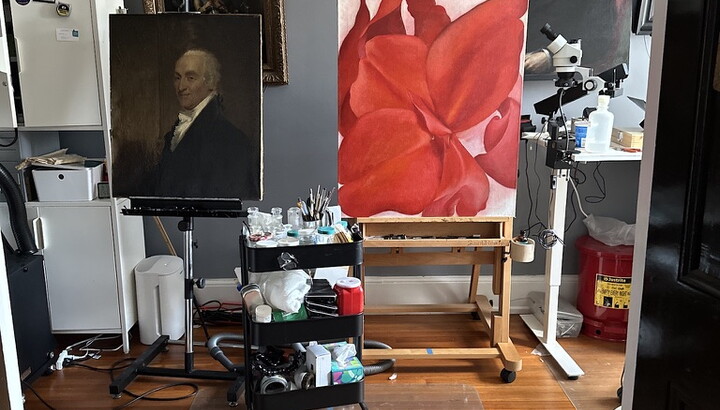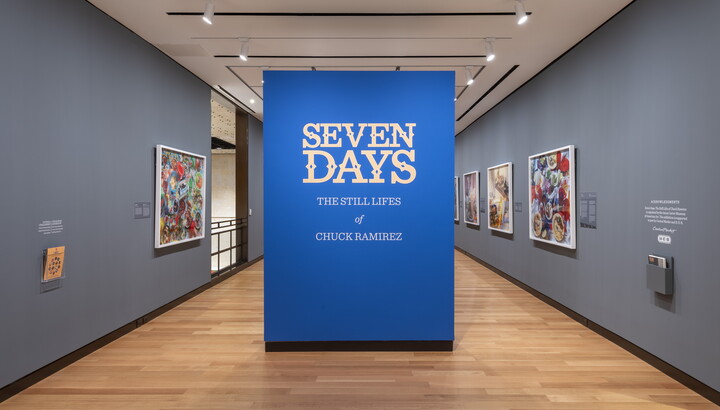The Carter Blog
Carter ARTicles
Cut into Verse
Apr 01, 2022
April is National Poetry Month, so what better time to introduce these beautiful works of art normally hidden away in the Library stacks? Out of our collection of Illustrated Books, I wanted to bring together a diverse group of artists to explore the many possibilities present in a humble block of wood.
Thomas W. Nason’s wood engravings illustrate serene, highly realistic nature scenes that are poetic in their own right, most often depicting his familiar New England countryside. He made a living creating these illustrations for magazines and books, and publishers commissioned his engravings to illustrate the works of fellow New Englanders, including The Poems of William Cullen Bryant.
Frances H. Gearhart found success as a watercolor painter before learning Japanese-style block printing from her sisters. Her early training shows in her expressive, colorful woodblock prints. In Things Fleeting, a limited-run book created in her California studio, Gearhart’s prints are accompanied by her beautifully hand-lettered poems.
Alfonso Ossorio grew up in a wealthy Filipino family, moving to the United States as a teenager to pursue his study of art. This background allowed him to explore a variety of media and movements that blended into his distinct artistic style. The woodcuts that accompany his poetry are fine examples of his early surrealist style, whereas most of his later work is decidedly abstract.
Self-taught artist, poet, and activist Helen West Heller often struggled financially and found herself drawn to the inexpensive medium of block printing. While her early art was overlooked by traditional juried exhibitions, her poetry was well-received and saw publication in magazines. By carving both text and image into the same block for Migratory Urge, she was able to play on both aspects of her creative interests and have control over the appearance of her text.
Born in Hawaii to Japanese immigrant parents, Isami Doi was instrumental in mentoring a group of second-generation, Asian-American artists. Doi found early success in printmaking, of which the highly imaginative, minutely detailed illustrations in The Wayward Muse are perfect examples. His poetry takes the form of long titles, directly tying them to the images he carves into wood.
After a serious illness prevented Paul Landacre from becoming a career athlete, he taught himself the art of block printing and made at least a partial living from commissions for book illustrations. He developed a very technical style, and his use of line and contrast make his scenes of the natural world incredibly evocative without being strictly realistic. Many of his works depict California and the American West, of which Roadrunner is a prime example.
These books sit in conversation with each other, and to open one is to open a dialogue between image and words. Poems and images are presented side by side or combined in the same printing block, creating meaning through form, rhythm, and line, and inviting the viewer to ask questions. How does one illustrate a poem? How does one create a poem to describe a work of art? Come visit the Library during our public hours to see more, or schedule a visit to our Study Room to view our rare books alongside prints from the Carter's permanent collection and decide for yourself!



![An open book spread: [left] a black-and-white print of a person crouching under a tree, [right] a handwritten poem.](https://d2ujpqfu85jxzw.cloudfront.net/website/panth-live/styles/full_width_varied_height/s3/2022-04/gearhart-things-fleeting-spread2.png?itok=zIj2CJdM)

![An open book spread: [left] a black-and white print of a handwritten poem atop graphic mountain forms, [right] a black-and-white print of people riding horses through a canyon.](https://d2ujpqfu85jxzw.cloudfront.net/website/panth-live/styles/full_width_varied_height/s3/2022-04/heller-migratory-urge-crop.png?itok=XwzvNF6X)
![An open book spread: [left] printed text, [right] a small image of a figure on a rocking horse traveling over a crescent moon and stars.](https://d2ujpqfu85jxzw.cloudfront.net/website/panth-live/styles/full_width_varied_height/s3/2022-04/doi-wayward-muse-spread.png?itok=eabA3-yA)




